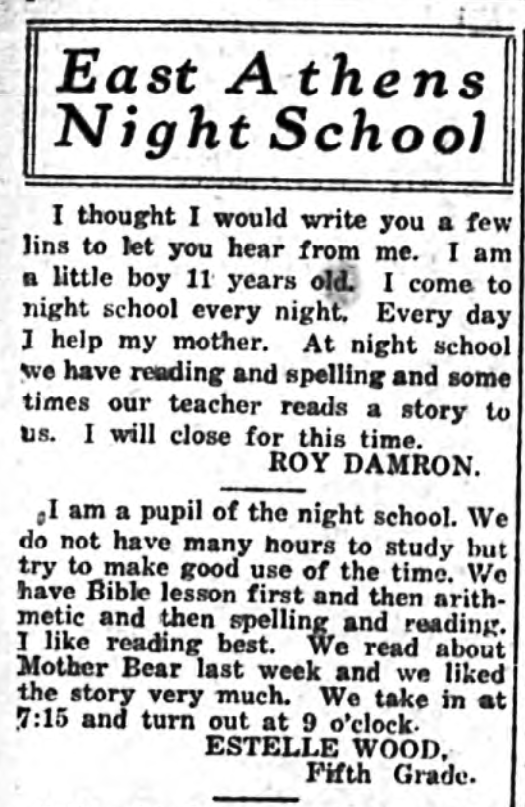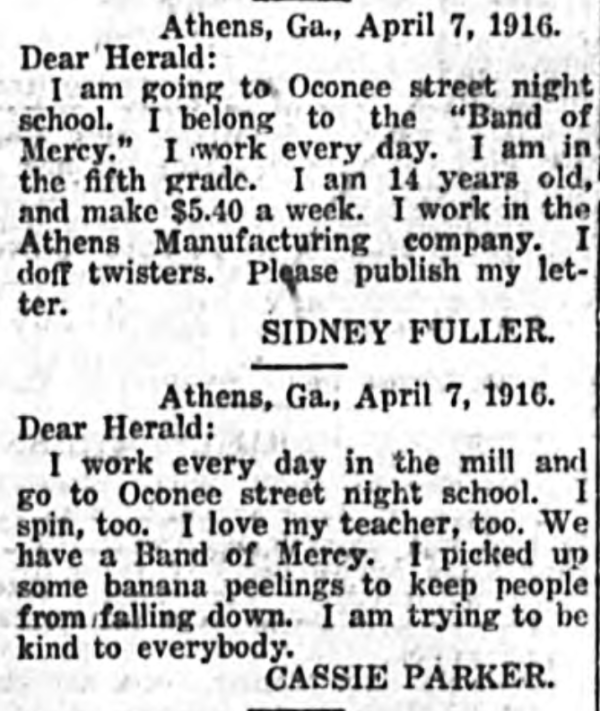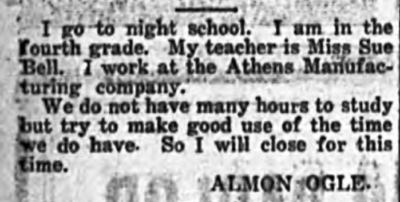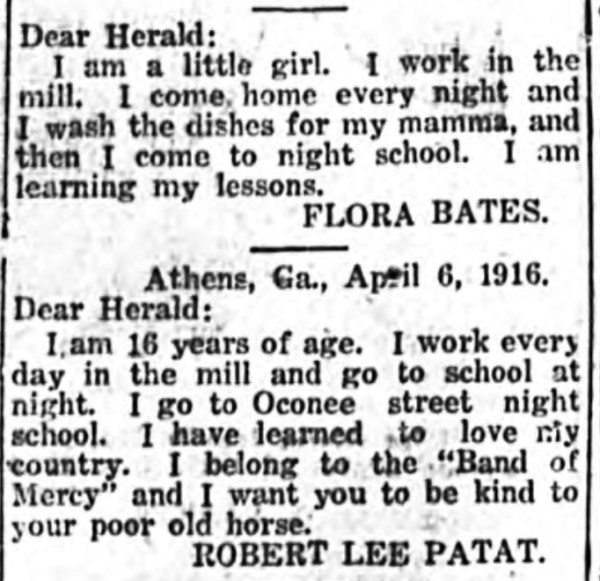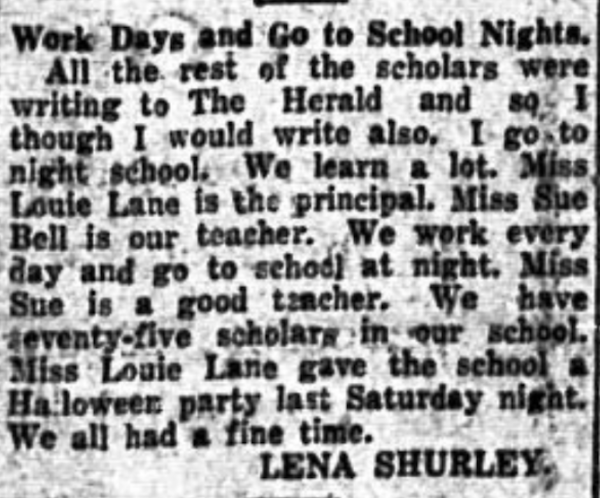Providing an education for mill kids: The East Athens Night School
The East Athens Night School was opened by Louie Lane in 1897 for the children working in the mills. The children customarily went to work for 12 hours from ~6am to ~6pm, and then went to school in the evenings: classes lasted from 6:30pm to 9pm every night in the week except Saturday. The Night School was designed to serve children, but adults came as well, and courses were added in bookkeeping.
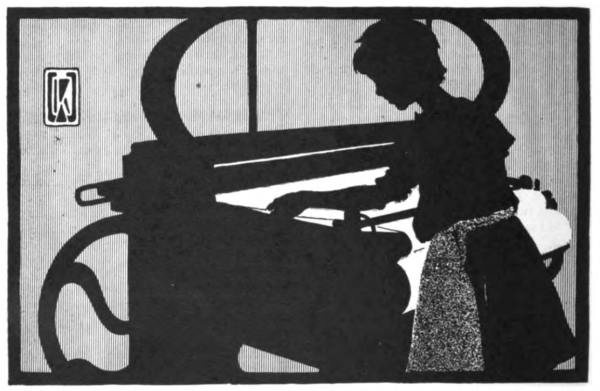
A 1906 block print of a child at the factory loom by Warren Rockwell, originally published in Cosmopolitan to illustrate Edwin Markham’s impassioned plea to end child labor, “The Hoe-Man in the Making.”
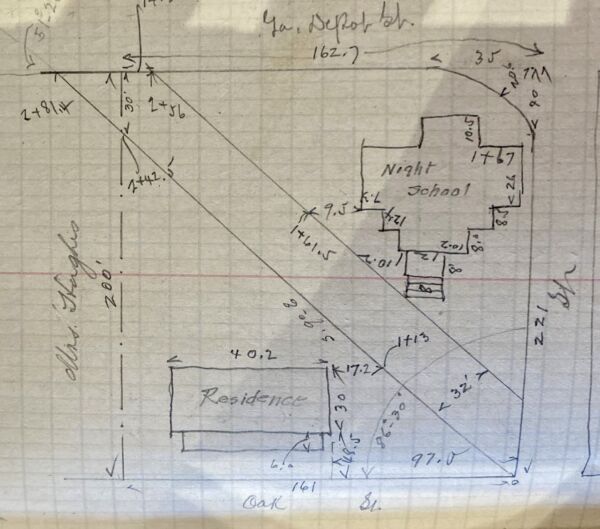
This 1909 sketch by J.W. Barnett, then Athens’ City Engineer, shows the location of the East Athens Night School on Oak Street. The residence beside the school is the home of Miss Louie Lane, “the Jane Addams of Athens.”
Hargrett Library, UGA
The Night School was initially (1897) housed on Oconee Street just up the street from St. Mary’s Church, so it was convenient for children working at the Athens Factory (now UGA School of Social Work), the Check Factory (now UGA’s Chicopee Building) and the Climax Hosiery Mill (once located on Oconee Street between the North Oconee River and Wilkerson Street). As the school grew, it needed more space and moved across the river to Oak Street (near today’s Dairy Queen). In 1913, having become part of the Athens public school system, the East Athens Night School moved to the Oconee Street School on Carr’s Hill, and the school building on Oak Street was renovated and re-opened as The Neighborhood House in 1914.
It must have been tremendously exciting for the Night School kids and their millworker parents to attend a graduation ceremony at the Opera House. These Night School kids were often the first members of their family to learn to read.
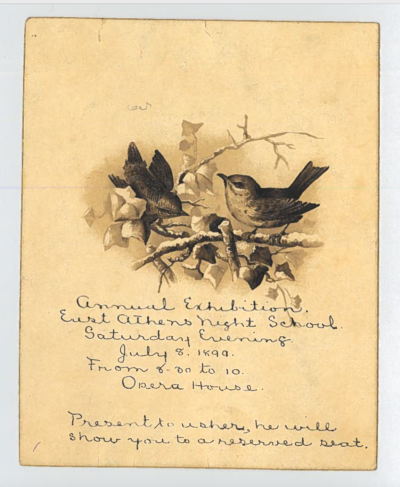
The annual graduation exhibition and ceremony was a momentous event held at Athens’ Opera House.
Hargrett Library, UGA
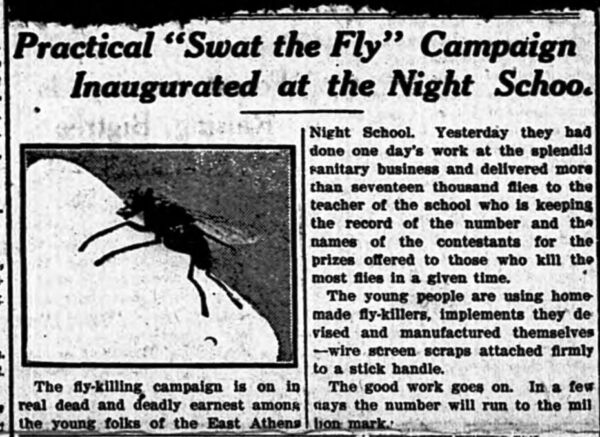
East Athens Night School students killed over 17,000 flies in one day.
The Night School taught basic education, and also got children involved in campaigns designed to improve the health and welfare of themselves and their families. One of these, the Angell Band of Mercy promoted kindness to animals; another, the “Swat the Fly” campaign protected public health by encouraging children to swat flies. Both of these campaigns were very popular with the children.
The East Athens Night School was the most systematic and sustained effort to educate children working in the mills, but it was not the first. The Emmanuel Episcopal Church began running a free night school for factory workers sometime after mid-century. By the time the Southern Banner brought the school to public attention in June 1858, “probably one hundred pupils, men, women and children, married and single, [had] received to a greater or less extent the benefits of a secular and religious education.”
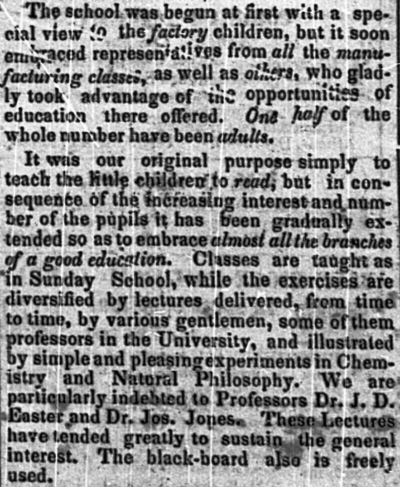
The Southern Banner first reported on the Night School in June 1858.

The Night School sometimes included the Ten Commandments.
The Banner reported that the school met three nights per week, and though it was “begun at first with a special view to factory children,” its enrollment comprised adults and children in equal measure. “The exercises of the school [were] always closed with the Evening Prayer and a brief lecture on some point of doctrine or duty.” Classes were taught “as in Sunday School,” though diverse lectures were given in a variety of subjects. After this 1858 article, no references to the Emmanuel Night School are made in the news again until in 1871, when a religious notice in the paper mentioned a “Brick School House, near the Factory.” Later Henry Hunt, who was born in the Athens Factory mill village in 1871, told the Federal Writers Project that “Mr. Bloomfield [who was a lay leader at Emmanuel Episcopal Church as well as being President of the Athens Manufacturing Company] provided a school for use three months in the year…It was go to school or go to work when you lived in his mill village.”
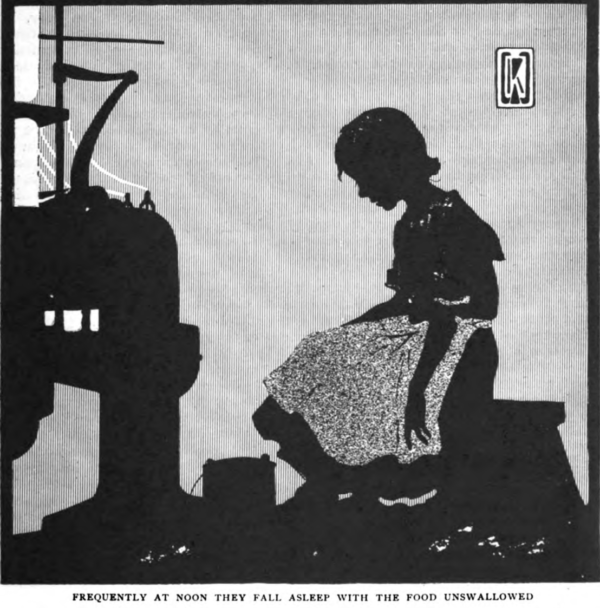
When not in school, mill children went to work—and the schedule of work and school was exhausting. In this 1906 illustration by Warren Rockwell, originally published in Cosmopolitan, the artist depicts a child who is too tired to even eat her lunch.
Cite this Article
McPherson, J. (2024, August). East Athens Night School. Complex Cloth. https://complexcloth.org/east-athens-night-school/
Sources
The Athens Banner. (1912). Fly campaign spreads to take in the entire city of Athens, 12 June, https://gahistoricnewspapers.galileo.usg.edu/lccn/sn88054098/1912-06-01/ed-1/seq-8/print/image_567x817_from_0,0_to_3918,5642/
